Sensor Device for Contactless Chemical Analysis Based on High-Frequency Inductance Coil †
Abstract
:1. Introduction
2. Methods
2.1. Measuring Device
2.2. Samples
3. Results and Discussion
3.1. Quantification of Inorganic Salts
3.2. Analysis of Organic Compounds
3.3. Real Sample Analysis
4. Conclusions
Author Contributions
Funding
Institutional Review Board Statement
Informed Consent Statement
Data Availability Statement
Conflicts of Interest
References
- Light, T.S. Electrodeless conductivity. ACS Symp. Ser. 1989, 29, 429–441. [Google Scholar] [CrossRef]
- Clayton, J.C.; Hazel, J.F.; McNabb, W.M.; Schnable, G.I. A high-frequency titration apparatus. Anal. Chim. Acta 1955, 13, 487–493. [Google Scholar] [CrossRef]
- Yuskina, E.; Makarov, N.; Khaydukova, M.; Filatenkova, T.; Shamova, O.; Semenov, V.; Panchuk, V.; Kirsanov, D. A Simple Contactless High-Frequency Electromagnetic Sensor: Proof of Concept. Anal. Chem. 2022, 94, 11978–11982. [Google Scholar] [CrossRef] [PubMed]
- Kirsanov, D.; Panchuk, V.; Agafonova-Moroz, M.; Khaydukova, M.; Lumpov, A.; Semenov, V.; Legin, A. A sample-effective calibration design for multiple components. Analyst 2014, 139, 4303–4309. [Google Scholar] [CrossRef] [PubMed]
- Wold, S.; Sjöström, M.; Eriksson, L. PLS-regression: A basic tool of chemometrics. Chemom. Intell. Lab. Syst. 2001, 58, 109–130. [Google Scholar] [CrossRef]
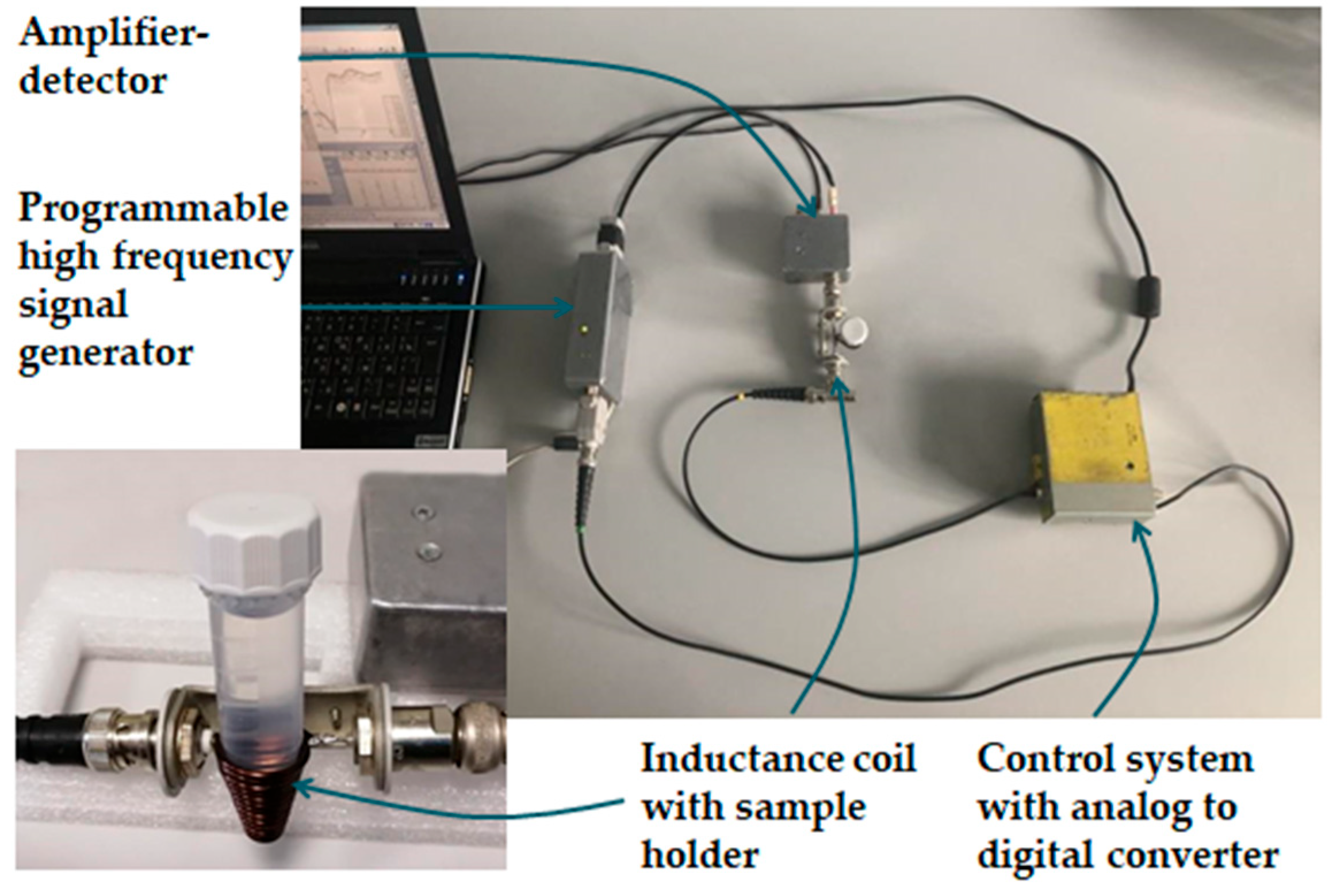
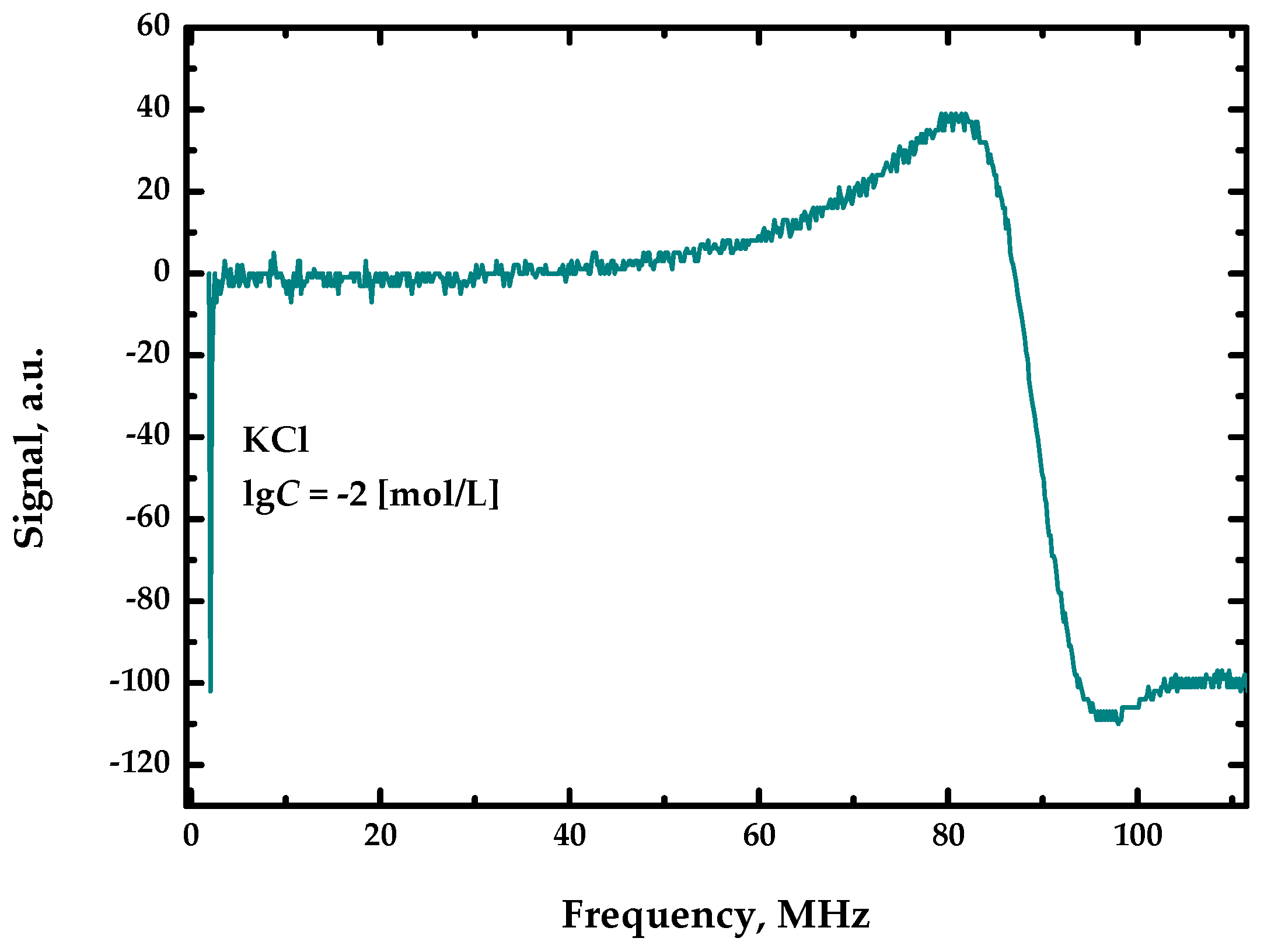
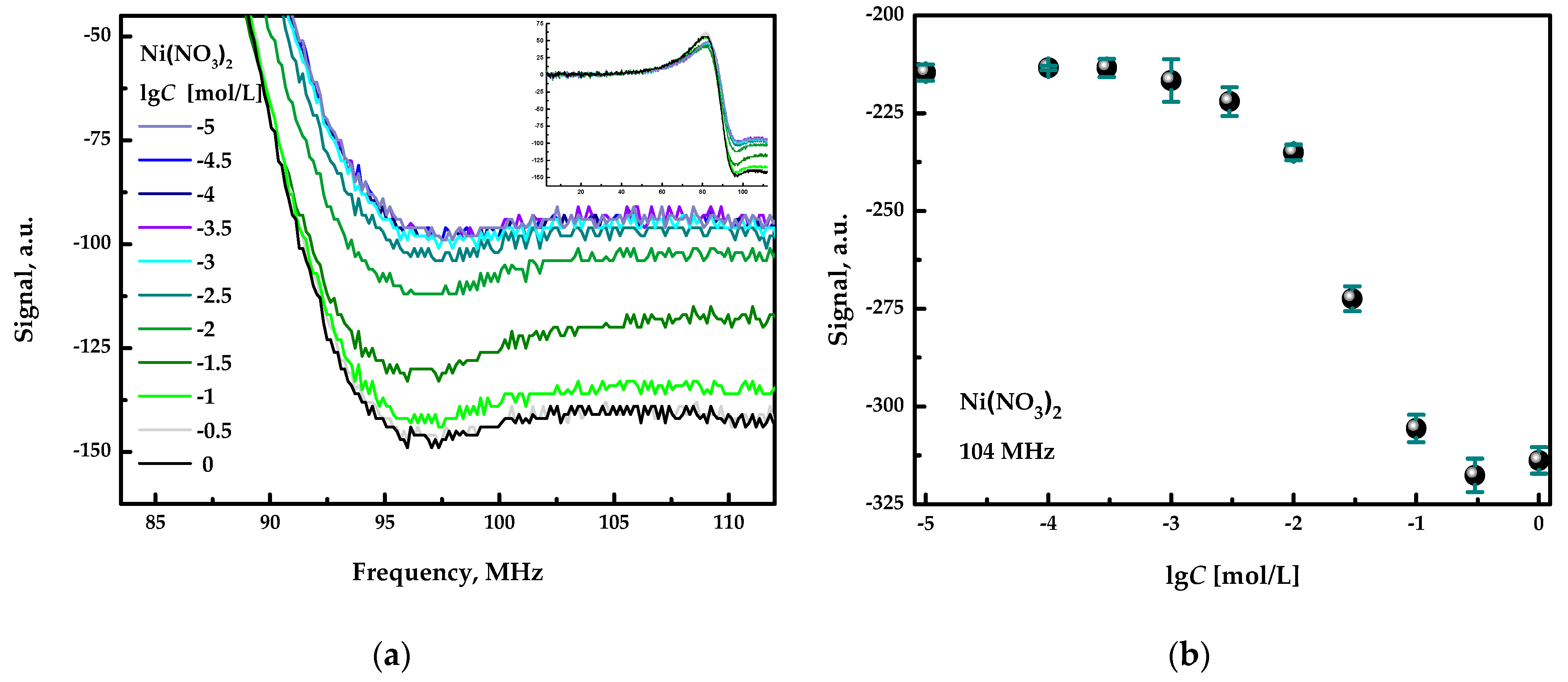
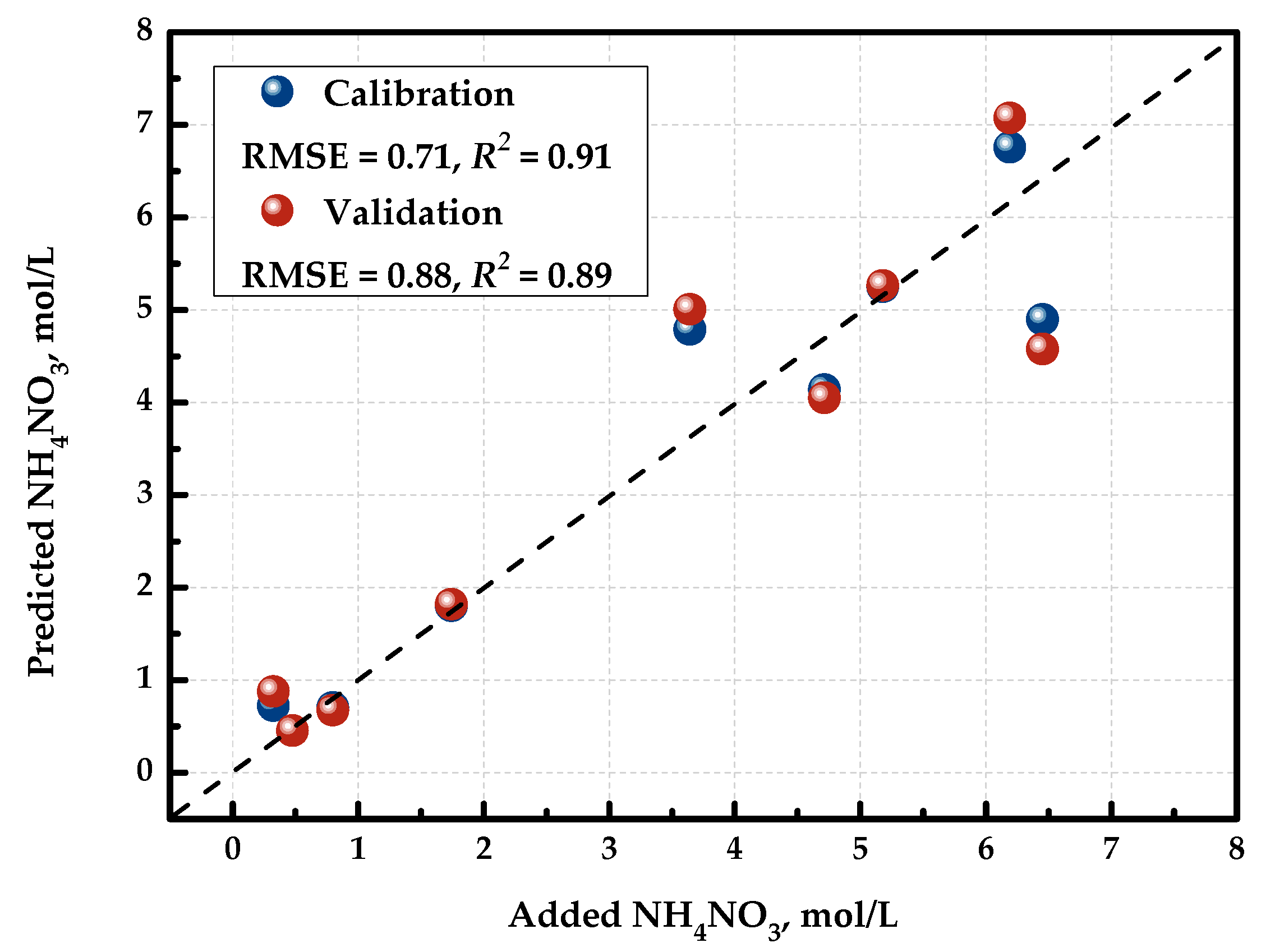
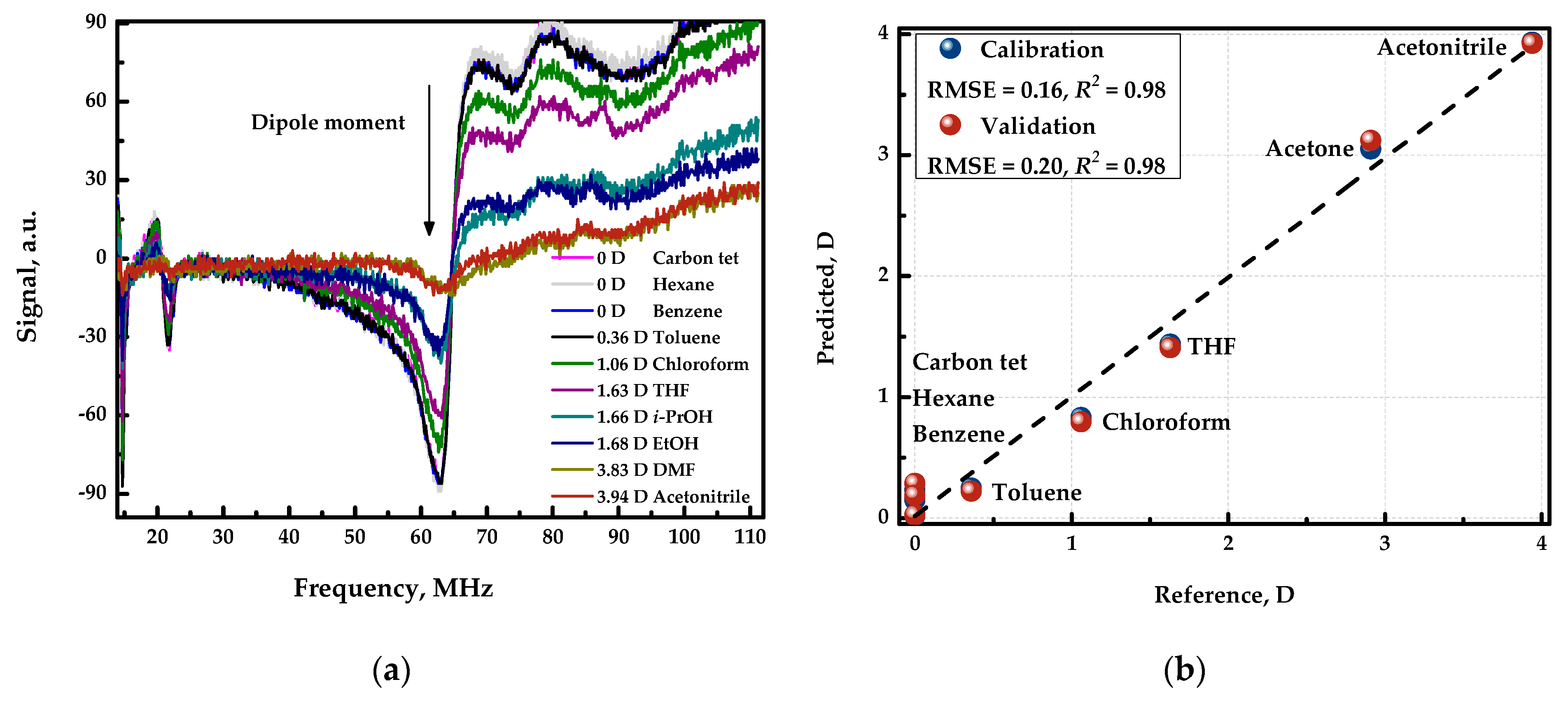
| Solution Number | NH4OH (mol/L) | NH4NO3 (mol/L) | AcOH (mol/L) |
|---|---|---|---|
| 1 | 0.044 | 0.325 | 0.148 |
| 2 | 0.172 | 5.180 | 0.088 |
| 3 | 0.260 | 0.476 | 0.102 |
| 4 | 0.340 | 4.714 | 0.202 |
| 5 | 0.536 | 0.798 | 0.064 |
| 6 | 0.085 | 6.451 | 0.179 |
| 7 | 0.387 | 3.643 | 0.110 |
| 8 | 0.189 | 1.743 | 0.216 |
| 9 | 0.548 | 6.191 | 0.082 |
Disclaimer/Publisher’s Note: The statements, opinions and data contained in all publications are solely those of the individual author(s) and contributor(s) and not of MDPI and/or the editor(s). MDPI and/or the editor(s) disclaim responsibility for any injury to people or property resulting from any ideas, methods, instructions or products referred to in the content. |
© 2023 by the authors. Licensee MDPI, Basel, Switzerland. This article is an open access article distributed under the terms and conditions of the Creative Commons Attribution (CC BY) license (https://creativecommons.org/licenses/by/4.0/).
Share and Cite
Yuskina, E.; Makarov, N.; Khaydukova, M.; Semenov, V.; Panchuk, V.; Kirsanov, D. Sensor Device for Contactless Chemical Analysis Based on High-Frequency Inductance Coil. Eng. Proc. 2023, 48, 42. https://doi.org/10.3390/CSAC2023-14886
Yuskina E, Makarov N, Khaydukova M, Semenov V, Panchuk V, Kirsanov D. Sensor Device for Contactless Chemical Analysis Based on High-Frequency Inductance Coil. Engineering Proceedings. 2023; 48(1):42. https://doi.org/10.3390/CSAC2023-14886
Chicago/Turabian StyleYuskina, Ekaterina, Nikodim Makarov, Maria Khaydukova, Valentin Semenov, Vitaly Panchuk, and Dmitry Kirsanov. 2023. "Sensor Device for Contactless Chemical Analysis Based on High-Frequency Inductance Coil" Engineering Proceedings 48, no. 1: 42. https://doi.org/10.3390/CSAC2023-14886
APA StyleYuskina, E., Makarov, N., Khaydukova, M., Semenov, V., Panchuk, V., & Kirsanov, D. (2023). Sensor Device for Contactless Chemical Analysis Based on High-Frequency Inductance Coil. Engineering Proceedings, 48(1), 42. https://doi.org/10.3390/CSAC2023-14886






